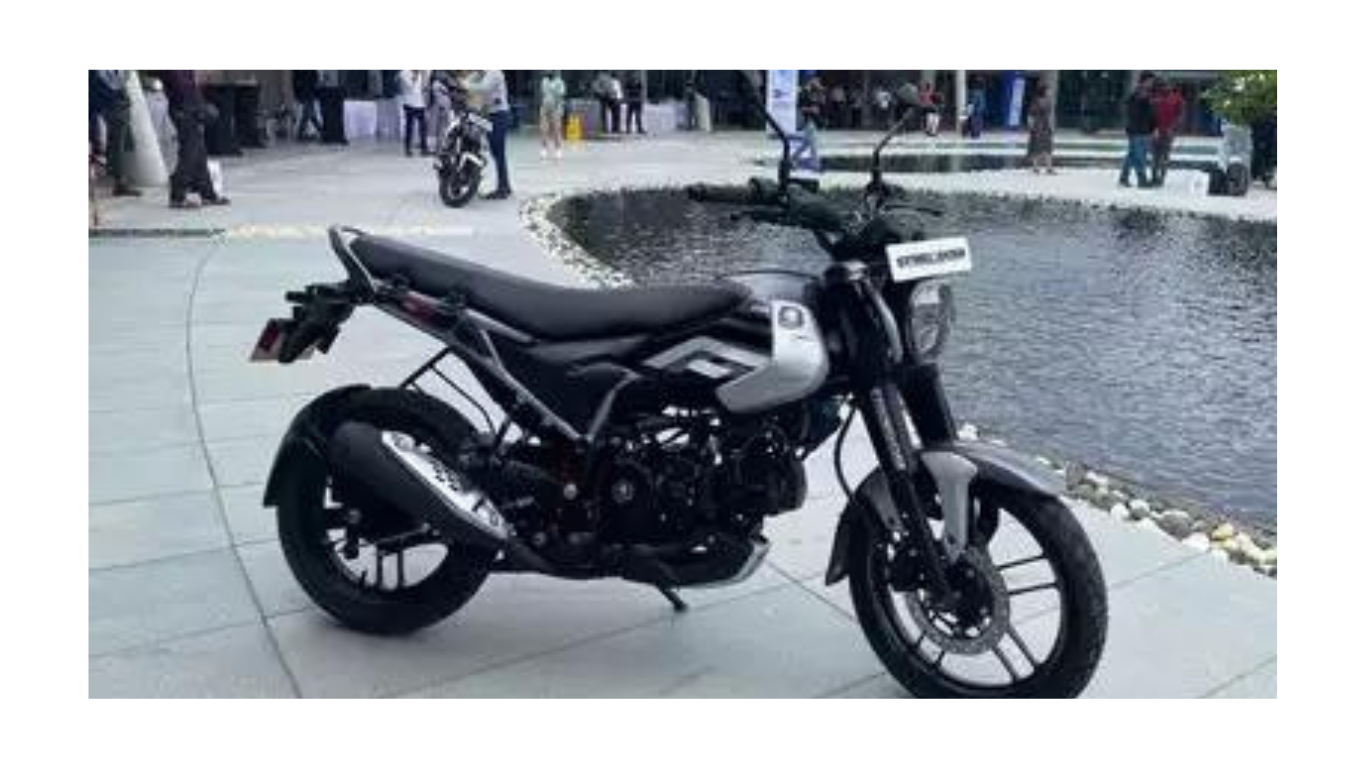Introduction to CNG Bikes
What is a CNG Bike?
A CNG bike is a two-wheeled vehicle that runs on compressed natural gas (CNG) instead of traditional petrol or diesel. CNG bikes are designed to be more environmentally friendly and cost-effective, offering an alternative to conventional fuel-powered bikes.
History and Development of CNG Bikes
The concept of CNG bikes emerged as a response to the growing need for sustainable transportation solutions. With advancements in technology and increasing awareness about environmental conservation, CNG bikes have gained popularity over the past decade.
Benefits of CNG Bikes
Environmental Benefits
CNG bikes emit significantly lower levels of pollutants compared to petrol and diesel bikes. They produce fewer greenhouse gases, such as carbon dioxide and nitrogen oxides, contributing to improved air quality and reduced environmental impact.
Economic Benefits
Running a CNG bike is generally cheaper than operating a petrol or diesel bike. CNG is a more affordable fuel option, leading to cost savings for riders. Additionally, CNG bikes have lower maintenance costs due to fewer engine deposits and less wear and tear.
Health Benefits
By reducing air pollution, CNG bikes contribute to better public health. Lower emissions of harmful pollutants help decrease respiratory and cardiovascular diseases, improving overall community health.
How CNG Bikes Work
Conversion Process
Converting a conventional bike to run on CNG involves installing a CNG conversion kit. This kit includes components such as a CNG tank, pressure regulator, fuel injectors, and an electronic control unit (ECU). The conversion process typically takes a few hours and should be performed by certified professionals.
Key Components of a CNG Bike
- CNG Tank: Stores the compressed natural gas.
- Pressure Regulator: Reduces the high pressure of CNG to a usable level for the engine.
- Fuel Injectors: Deliver the CNG to the engine’s combustion chamber.
- Electronic Control Unit (ECU): Manages the fuel injection system and ensures optimal performance.
CNG Fuel System
The CNG fuel system in a bike operates similarly to that in cars. CNG is stored in a high-pressure tank and delivered to the engine via injectors. The ECU controls the fuel mixture to ensure efficient combustion and performance.
CNG vs. Petrol and Diesel Bikes
Cost Comparison
CNG bikes are more economical in terms of fuel costs. The price of CNG is generally lower than petrol and diesel, resulting in significant savings for riders over time. Additionally, the maintenance costs of CNG bikes are lower due to reduced engine wear.
Performance Comparison
While CNG bikes may have slightly lower power output compared to petrol and diesel bikes, advancements in technology have minimized this difference. Modern CNG bikes offer competitive performance, making them a viable alternative for everyday commuting.
Emissions Comparison
CNG bikes emit fewer pollutants compared to their petrol and diesel counterparts. They produce lower levels of carbon dioxide, carbon monoxide, and nitrogen oxides, contributing to cleaner air and reduced environmental impact.
Top CNG Bike Models in the Market
Popular CNG Bike Models
Some popular CNG bike models include:
- Hero Splendor iSmart CNG
- Bajaj Pulsar 150 CNG
- TVS Apache RTR 160 CNG
Features and Specifications
Each of these models comes with specific features and specifications tailored to meet the needs of different riders. They offer varying engine capacities, mileage, and additional features such as fuel efficiency indicators and advanced safety systems.
User Reviews and Ratings
User reviews and ratings for CNG bikes are generally positive, highlighting the cost savings, environmental benefits, and satisfactory performance. Riders appreciate the lower fuel costs and reduced environmental impact.
Conversion of Existing Bikes to CNG
Conversion Kits
Several companies offer CNG conversion kits for existing bikes. These kits are designed to fit various bike models and come with all the necessary components for a successful conversion.
Installation Process
The installation process involves fitting the CNG tank, pressure regulator, fuel injectors, and ECU. It’s essential to have the conversion done by certified professionals to ensure safety and optimal performance.
Legal and Safety Considerations
Before converting a bike to CNG, it’s crucial to check local regulations and safety standards. Proper installation and regular inspections are necessary to ensure the safe operation of CNG bikes.
Infrastructure for CNG Bikes
Availability of CNG Stations
The availability of CNG refueling stations is a critical factor for CNG bike adoption. Many urban areas have a growing network of CNG stations, making it convenient for riders to refuel.
Refueling Process
Refueling a CNG bike is similar to refueling a car. The process involves connecting the CNG nozzle to the bike’s tank and filling it with compressed natural gas. The process is quick and straightforward.
Cost of CNG Fuel
CNG fuel is typically cheaper than petrol and diesel, offering significant cost savings for riders. The price of CNG varies by region but remains a cost-effective option for daily commuting.
Maintenance of CNG Bikes
Regular Maintenance Tips
Maintaining a CNG bike involves regular checks of the fuel system, including the CNG tank, pressure regulator, and injectors. Ensuring proper lubrication and timely replacement of parts is essential for optimal performance.
Common Issues and Solutions
Common issues with CNG bikes include leaks in the fuel system, reduced engine performance, and irregular fuel supply. Regular inspections and maintenance can help prevent these issues and ensure reliable operation.
Longevity of CNG Bikes
With proper maintenance, CNG bikes can have a long lifespan. The reduced engine wear and lower operating temperatures contribute to the durability and longevity of CNG-powered bikes.
Government Policies and Incentives
Subsidies and Incentives
Many governments offer subsidies and incentives to encourage the adoption of CNG bikes. These incentives may include tax benefits, rebates on conversion kits, and grants for CNG infrastructure development.
Regulations and Standards
Regulations and standards for CNG bikes ensure safety and environmental compliance. Adhering to these standards is crucial for the safe and legal operation of CNG-powered vehicles.
Future Government Plans
Governments are continuously working on policies to promote sustainable transportation. Future plans may include expanding the CNG infrastructure, increasing incentives for CNG vehicles, and implementing stricter emissions regulations.
Challenges and Limitations of CNG Bikes
Limited CNG Infrastructure
One of the main challenges for CNG bikes is the limited availability of refueling stations. Expanding the CNG infrastructure is essential for the widespread adoption of CNG bikes.
Conversion Costs
The initial cost of converting a conventional bike to CNG can be a barrier for some riders. However, the long-term cost savings on fuel and maintenance can offset the conversion costs.
Performance Limitations
While modern CNG bikes offer competitive performance, there may still be a slight difference in power output compared to petrol and diesel bikes. Continuous advancements in technology aim to bridge this gap.
Future of CNG Bikes
Technological Advancements
Ongoing research and development in CNG technology are expected to improve the efficiency and performance of CNG bikes. Innovations such as hybrid CNG-electric bikes may also emerge in the future.
Market Trends
The demand for eco-friendly transportation solutions is driving the market for CNG bikes. Increasing awareness about environmental issues and cost savings are contributing to the growing popularity of CNG bikes.
Predictions for CNG Bikes
Experts predict that CNG bikes will play a significant role in sustainable transportation. As technology advances and infrastructure expands, CNG bikes are expected to become more mainstream and widely adopted.
Environmental Impact of CNG Bikes
Reduction in Carbon Footprint
CNG bikes produce fewer greenhouse gases, significantly reducing the carbon footprint of riders. This reduction in emissions contributes to combating climate change and promoting environmental sustainability.
Air Quality Improvement
The lower emissions from CNG bikes help improve air quality, particularly in urban areas. Reduced levels of pollutants such as nitrogen oxides and particulate matter lead to healthier living conditions.
Contribution to Sustainable Transport
CNG bikes are an essential component of sustainable transportation solutions. By offering an eco-friendly alternative to petrol and diesel bikes, they help reduce the overall environmental impact of the transportation sector.
Economic Impact of CNG Bikes
Cost Savings for Users
Riders of CNG bikes benefit from lower fuel costs and reduced maintenance expenses. These cost savings make CNG bikes an economically viable option for daily commuting and long-term use.
Impact on the Fuel Industry
The adoption of CNG bikes can influence the fuel industry by increasing the demand for natural gas and reducing reliance on petrol and diesel. This shift can lead to changes in fuel pricing and availability.
Job Creation in the CNG Sector
The growth of the CNG bike market can create job opportunities in various sectors, including manufacturing, conversion, maintenance, and infrastructure development. This economic boost can contribute to overall economic growth.
Case Studies and Success Stories
Successful Implementation of CNG Bikes
Several cities and regions have successfully implemented CNG bike programs, demonstrating the feasibility and benefits of this transportation solution. These case studies provide valuable insights and best practices for other areas.
User Testimonials
Users of CNG bikes often share positive experiences, highlighting the cost savings, environmental benefits, and satisfactory performance. These testimonials help build confidence and encourage more riders to switch to CNG bikes.
Lessons Learned
The experiences of early adopters and successful implementations offer lessons learned that can guide future initiatives. Understanding the challenges and solutions can help improve the adoption and effectiveness of CNG bikes.
Conclusion
CNG bike offer numerous benefits, including cost savings, environmental advantages, and improved public health. Despite challenges such as limited infrastructure and conversion costs, CNG bikes are a promising solution for sustainable transportation.
FAQs
- What are the main benefits of using a CNG bike?
- CNG bikes offer environmental, economic, and health benefits, including lower emissions, cost savings, and reduced air pollution.
- How does a CNG bike work?
- A CNG bike uses a compressed natural gas fuel system, which includes components like a CNG tank, pressure regulator, and fuel injectors.
- Is it possible to convert a conventional bike to run on CNG?
- Yes, existing bikes can be converted to run on CNG using a conversion kit. The process should be performed by certified professionals.
- What are the challenges of using a CNG bike?
- Challenges include limited CNG infrastructure, conversion costs, and potential performance differences compared to petrol and diesel bikes.
- What is the future outlook for CNG bikes?
- The future of CNG bikes looks promising, with ongoing technological advancements and increasing demand for eco-friendly transportation solutions.




